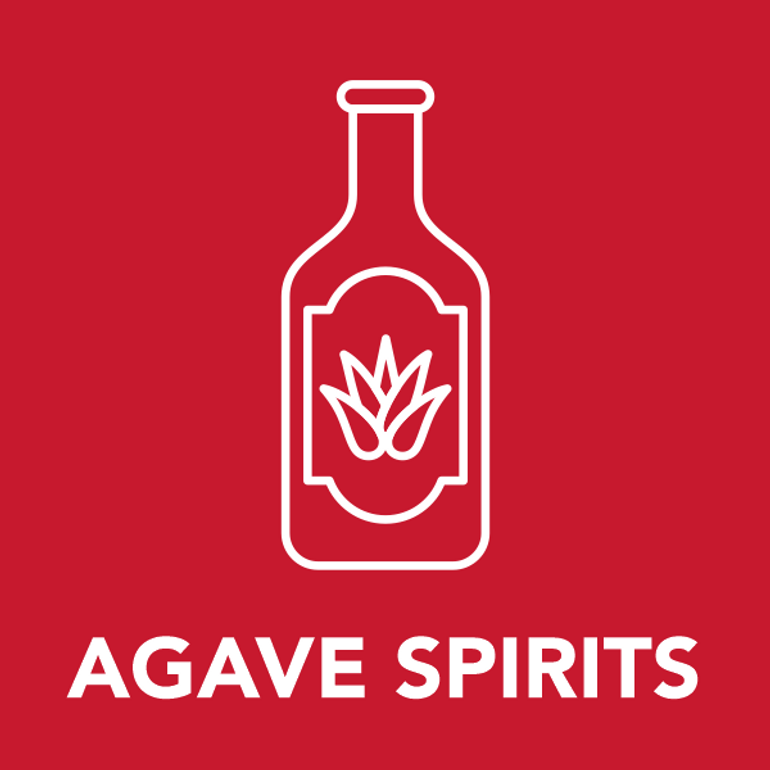What a difference a decade makes. Just ten years ago, Surdyk's had a small section featuring four or five mass-produced tequilas and a single mezcal with a petrified worm at the bottom of the bottle. For many, exposure to agave spirits was limited to spring breaks in Cancun and overly sweet margaritas at inauthentic Mexican chain restaurants.
EXPAND YOUR PALATE: AGAVE SPIRITS

Posted on Mar 3rd 2025
Fast forward to today, and our selection has expanded dramatically. Now, over 250 agave spirits line our shelves, offering a dazzling array of handcrafted options from small, family-owned distilleries. These producers follow time-honored traditions, using recipes passed down through generations.
Despite Mexico having four officially recognized Denominación de Origen (DO) designations for agave-based spirits—each with specific regulations on geography, production methods, and agave varieties—many people still mistakenly refer to all agave spirits as “tequila.” Here’s a quick breakdown of the four DO regions, plus a look at sotol, a lesser-known but equally fascinating spirit:
1. TEQUILA (DO established in 1974)
-
GEOGRAPHIC REGION: Jalisco, as well as select municipalities in Nayarit, Michoacán, Guanajuato, and Tamaulipas
-
AGAVE TYPE: Exclusively Blue Weber
-
COOKING METHOD: Steam-cooked in an autoclave
-
DISTILLATION: Copper or stainless steel
-
AGING CATEGORIES:
-
-
Blanco: Unaged
-
-
-
Reposado: Aged 2–12 months in oak
-
-
-
Añejo: Aged 1–3 years
-
-
-
Extra Añejo: Aged over 3 years
-
-
ALCOHOL CONTENT: 35%–55% ABV
Staff Favorites:
2. MEZCAL (DO established in 1994)
-
GEOGRAPHIC REGION: Oaxaca, Durango, Guerrero, San Luis Potosí, Puebla, Zacatecas, Michoacán, Tamaulipas, and Guanajuato
-
AGAVE TYPE: Any agave species (most commonly Espadín)
-
COOKING METHOD: Pit-roasted
-
DISTILLATION: Clay or copper pot still
-
AGING CATEGORIES:
-
-
Joven: Unaged
-
-
-
Reposado: Aged 2–12 months in oak
-
-
-
Añejo: Aged at least 1 year
-
-
-
Madurado en Vidrio: Stored in glass containers for at least 1 year before bottling
-
-
ALCOHOL CONTENT: 35%–55% ABV
Staff Favorites:
3. BACANORA (DO established in 2000)
-
GEOGRAPHIC REGION: Sonora
-
AGAVE TYPE: 100% Angustifolia Haw (a subspecies of Espadín)
-
COOKING METHOD: Pit-roasted
-
DISTILLATION: Copper or stainless steel pot still
-
ALCOHOL CONTENT: 38%–55% ABV
Staff Favorites:
4. RAICILLA (DO established in 2019)
-
GEOGRAPHIC REGION: 16 municipalities within Jalisco
-
AGAVE TYPE: Primarily Lechuguilla & Maximiliana (other species permitted)
-
COOKING METHOD: Clay ovens or pit-roasting
-
DISTILLATION: Filipino-style stills (wood or copper) or copper alembic stills
-
ALCOHOL CONTENT: 35%–55% ABV
Staff Favorites:
5. SOTOL (Technically not agave-based) (DO established in 2002)
-
GEOGRAPHIC REGION: Chihuahua, Coahuila, Durango
-
PLANT TYPE: Dasylirion, or ‘Desert Spoon’ plant
-
COOKING METHOD: Pit- or oven-roasted
-
DISTILLATION: Copper or stainless steel stills
-
ALCOHOL CONTENT: 38%–55% ABV
Staff Favorites:
Discover over 250 more Agave Spirits at Surdyk's!
